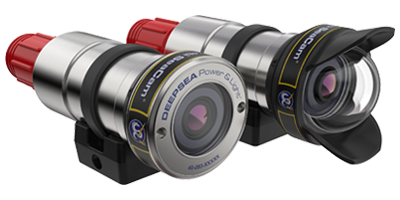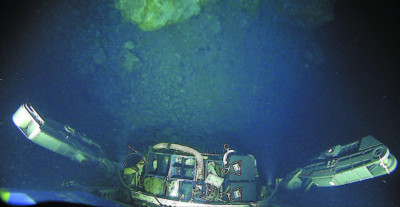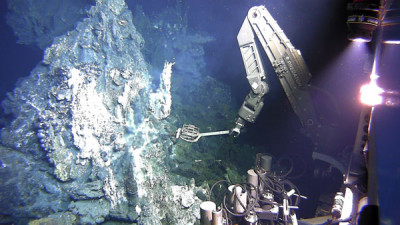Industry Case Study: DSPL’s FlexLink®
As seen in Ocean News & Technology, July 2015

HD Multi SeaCam® Dome and Flat port versions available with FleXlink™
Over the last year, DeepSea Power & Light (DSPL) has been developing a unique transmission method for uncompressed HD-SDI video signals in subsea use, termed FleXlink™. The goal for the technology was to enable the use of more compact and robust interconnects than have previously been used for subsea HD video. This allows integrators to confidently install cameras in confined and dynamic locations. The DSPL engineers were able to design the FleXlink system using standard Ethernet interconnects, which most operators carry in a standard vehicle spares kit. After FleXlink was validated in the lab, DSPL partnered with Woods Hole Oceanographic Institution (WHOI) to conduct field trials.

HD Multi SeaCam® Flat port overlooking manipulator work. Photo credit: Copyright Woods Hole Oceanographic Institution and Anna Louise Reysenbach of Portland State University.

HD Multi SeaCam® Dome port overlooking front of ROV Jason. Photo credit: Copyright Woods Hole Oceanographic Institution and Adam Soule of Woods Hole Oceanographic Institution and Rebecca Carey of University of Tasmania.
WHOI and DSPL both have a long history of pushing boundaries for subsea technology and exploration. The WHOI team aboard the R/V Roger Revelle, operating ROV Jason for the 2015 Mapping, Exploration, & Sampling at Havre expedition, conducted field trials using DSPL cameras outfitted with FleXlink technology. WHOI’s technical team evaluated two versions of DSPL’s HD Multi SeaCam with FleXlink in several locations on ROV Jason. These locations included above the manipulator arms and as a context camera over the vehicle. Woods Hole Engineer Korey Verhein, had the following to say about their experience with the camera:
“We tested the Flexlink system on two cruises out of Auckland, New Zealand over May and June. The first cruise, at Le Havre Volcano, was headed by chief scientists Adam Soule and Recbecca Carey. The second cruise, in the Lau Basin, was headed by chief scientist Anna Louise Reysenbach. Our test rig consisted of a Flexlink bottle, a 1080p wide angle dome camera, and a 1080p flat windowed “utility cam.” We installed the dome camera on our overview pan and tilt and the utility cam as one of our manipulator views. Both cameras had fantastic video output. Our current manipulator views have composite DSPL pencil cameras and the multiplication in definition was invaluable. The dome camera was remarkable in that its angle of view in all directions allowed for a great overview of the area in front of the ROV, which was great for piloting. The technology itself is exciting for our group. It will allow us to add numerous small form factor high definition cameras to our system without requiring expensive hybrid fiber connectors or dealing with both a fiber and power/comms connection. It is also helpful that the media convertors are separate from the cameras themselves and use off the shelf SFP modules. It allows for easier management of spares and wavelength changes when needed.” –Korey Verhein
Through field trials the FleXlink technology has been validated as a viable solution for subsea HD video transmission. When HD imaging is required for dynamic or confined spaces, FleXlink offers a versatile and economical solution. Besides being compact and reducing dependence on more fragile interconnect types, FleXlink can also minimize the diversity of required spares for a system.
As seen in the July 2015 issue of Ocean News & Technology magazine (subscribe)

